Past Initiative: Bee Sanctuaries, 2012 — 2024
During our founding era as The Honeybee Conservancy, we managed honeybee hives in zoos, urban farms, and other green spaces across New York City to serve as environmental and educational resources. Bee Sanctuary host locations provided protected habitat that included food and nesting sites for bumble, mason, carpenter, leaf cutter, and other bees, and homes for TBC’s custom cavity-nesting bee houses.
One third of our Bee Sanctuaries were placed in close proximity to urban farms or community food gardens where they helped to increase crop yield and support local food systems.
Through dynamic programming that included educational talks, classes, wildlife walks, community science initiatives and more, our Bee Sanctuaries engaged more than 15,000 visitors between 2021 and 2024 alone, inspiring environmental stewardship while educating on the importance of bees.
Due to shifting programmatic goals, The Bee Conservancy transitioned management of the hives to our host sites in the spring of 2025. We are proud to continue to collaborate with our wonderful partners for community education and events.
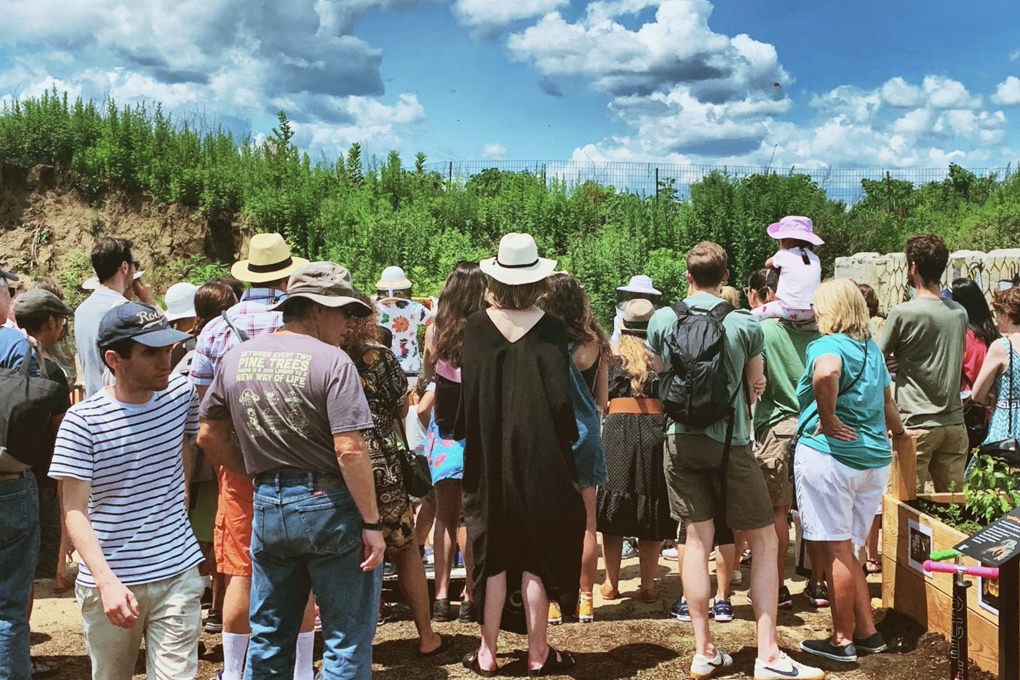
Governors Island
Location: Governors Island (NYC)
Established: 2018
Our flagship Sanctuary at the Urban Farm welcomed 4,000 to 5,000 visitors annually during our public stewardship weekends from May to October. The site of our annual World Bee Day festival, and public stewardship weekends from May to October, our “living lab” — replete with honey bee hives, native bee homes, and native flower beds — offered nature crafts, demonstrations, specimens and a robust special event schedule that included Pollinator Walks, Urban Farm Tours, Birds and Bees Walk with NYC Bird Alliance, Meet a Beekeeper, Seed Collection Workshops, and more.
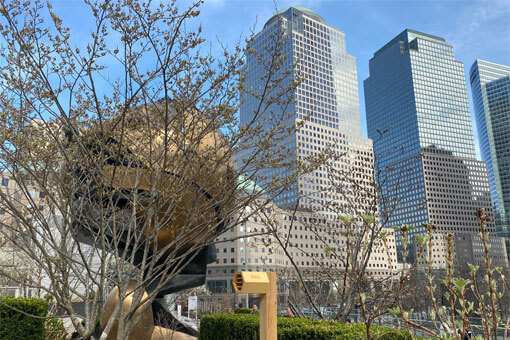
Liberty Park, World Trade Center
Location: Lower Manhattan (NYC)
Established: 2022
Overlooking the World Trade Center campus, Liberty Park is home to the St. Nicholas National Shrine and the famous bronze sculpture known as The Sphere. Through a partnership with the Port Authority of New York and New Jersey (PANYNJ), the park serves as the site of our first Native Bee Sanctuary, dedicated exclusively to fostering ground- and cavity-nesting bees. To date we have planted over 1200 native plants at Liberty park, and have installed four of TBC’s cavity-nesting bee houses, designed to optimize bee health. Read more about our habitat development collaboration with PANYNJ here.
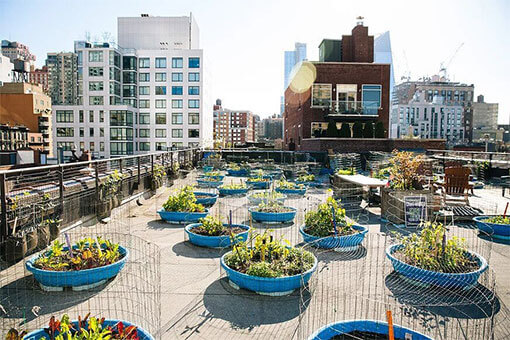
Hell’s Kitchen Farm Project
Location: Hell’s Kitchen, Manhattan (NYC)
Established: 2021
Hell’s Kitchen Farm Project, part of the Metro Baptist Church, is an urban rooftop farm in Hell’s Kitchen, Manhattan, managed and run by volunteers. Their mission is to create a more food secure urban community through collaborative farming, education, and community initiatives, growing fresh food on a previously underutilized rooftop for distribution through a local food pantry, providing community nutritional education, and organizing a Community Supported Agriculture (CSA) program. Our hives have supported food yield, and have been a learning tool for youth groups and farm trainees. Learn more about our Food Justice work here.
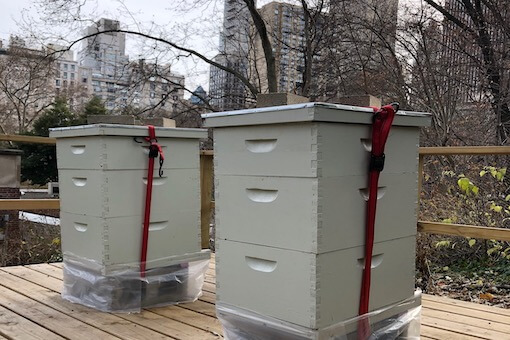
Central Park Zoo
Location: Central Park, Manhattan (NYC)
Established: 2019
Lions, tigers, and bees — oh my! The country’s second oldest zoo resides in Central Park, the green oasis at the heart of Manhattan’s concrete jungle. Here, in this 6.5-acre wildlife refuge that gets one million visitors a year, our bees helped pollinate the lush gardens within the Zoo and surrounding park lands. Now on public display with educational signage, our hives have been incorporated into opportunities like the zoo’s Conservation in Action Camp for 9th to 12th graders.
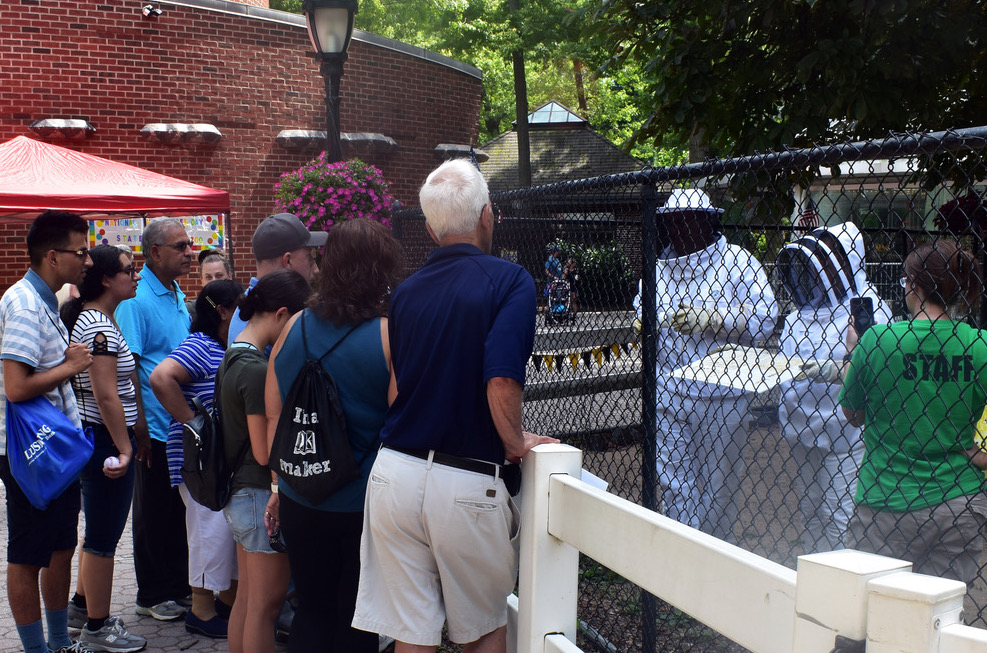
Staten Island Zoo
Location: Staten Island (NYC)
Established: 2019
Staten Island is home to the 2,800-acre Greenbelt and landfill reclamation project Freshkills Park. It’s also the site of the Staten Island Zoo, touted as the “First Educational Zoo” for pioneering the inclusion of education goals into its mission in the 1930s. The Zoo’s pollinator garden and two honey bee hives offered springboards for public talks and have been integrated into the Zoo’s annual Pollinator Palooza, social media storytelling, and educator development days.
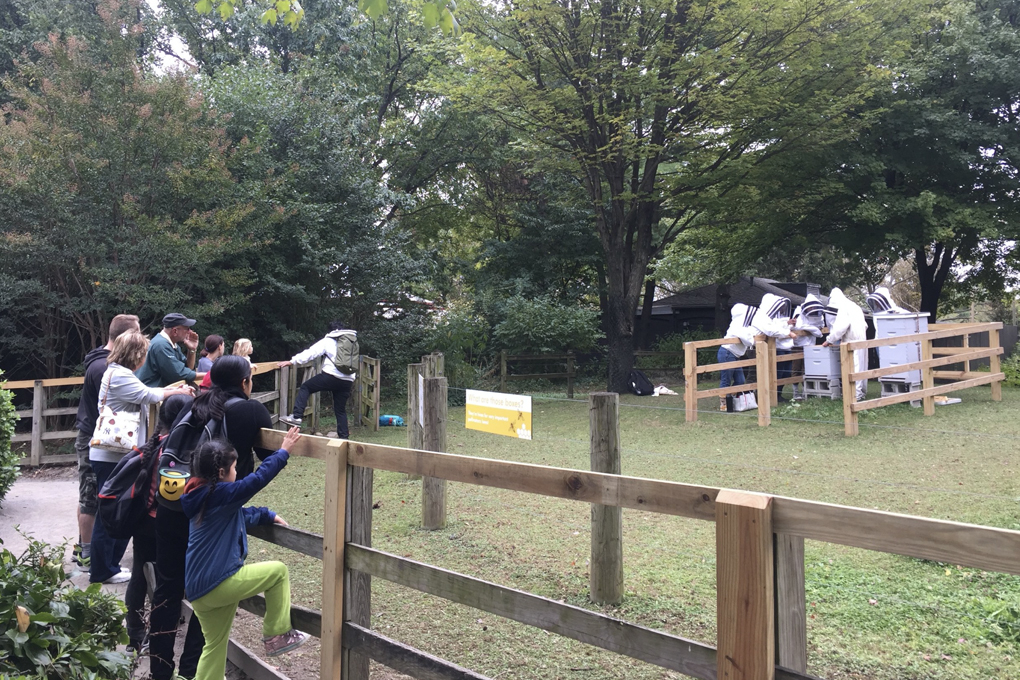
The Queens Zoo
Location: Flushing Meadows Corona Park, Queens (NYC)
Established: 2019
When they aren’t flying over iconic landmarks like the Unisphere and Arthur Ashe Stadium, home of the U.S. Open, the bees at Queens Zoo, located in Flushing Meadows Corona Park has been integrated into the Zoo’s educational program, serving audiences in the most diverse county in the nation. We have also provided the Zoo with native bee houses for their pollinator gardens.
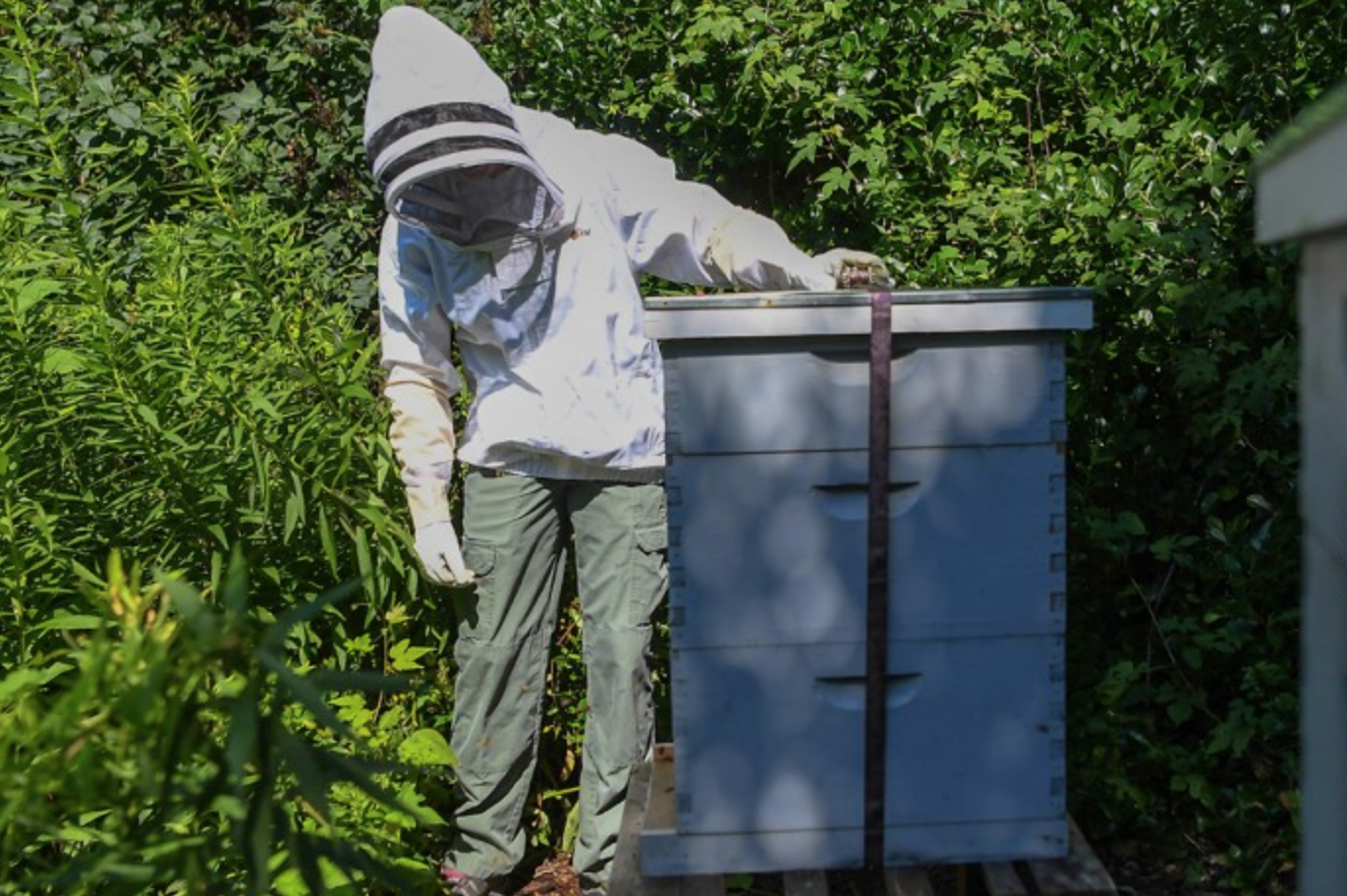
Prospect Park Zoo
Location: Brooklyn (NYC)
Established: 2020
Fruit bats and butterflies aren’t the only pollinators at the Prospect Park Zoo. The Bee Conservancy has two honey bee hives in the butterfly garden that help pollinate local lush foliage, the Zoo’s fruit trees and vegetable garden, and the 52-acre Brooklyn Botanic garden next door. The 12-acre zoo averages 300,000 visitors annually, and in addition to experiencing rare animals, they can learn about plants the horticulture team chose to attract migrating birds, bees, and butterflies. Prospect Park is home to 59 native bee species, which is 28% of all bee species east of the Mississippi River.
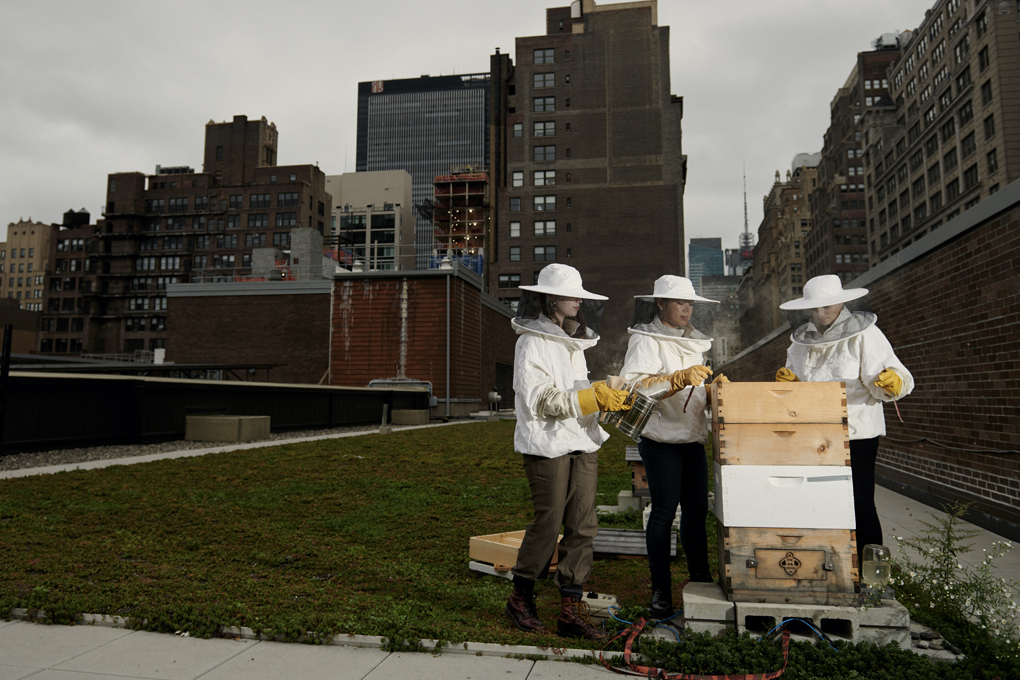
Fashion Institute of Technology
Location: Chelsea, Manhattan (NYC)
Established: 2017
This Bee Sanctuary introduced future fashion and beauty industry leaders to sustainable beekeeping practices and how to harvest bee-derived resources for projects, products, and designs. Each year, students helped harvest the honey, which has been bottled and used in an FIT-branded lip balm. Thebees also supported the Natural Dye Garden at FIT by pollinating rooftop plant life as well as the local pollinator corridor that includes Madison Square Park, the Flower District, and the High Line.
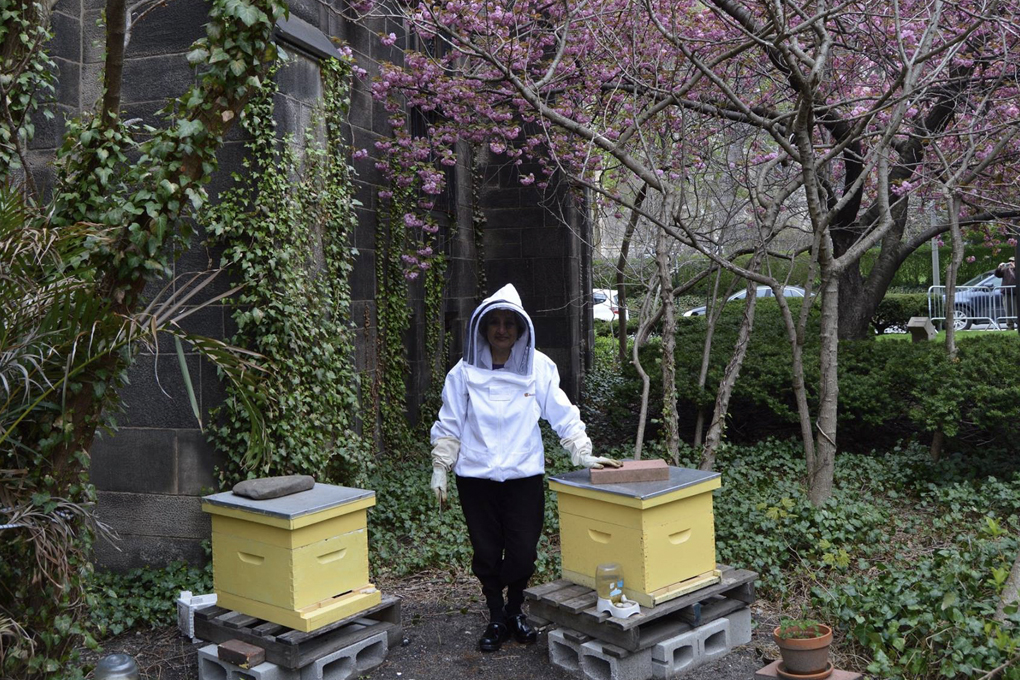
Cathedral of St. John the Divine
Location: Upper West Side, Manhattan (NYC)
Established: 2012
The largest cathedral in the world, St. John the Divine is renowned for its community-focused programs including performances, exhibitions, a soup kitchen and its annual St. Francis Day Blessing of the Animals, in which creatures of all shapes and sizes are brought to be blessed. Home to a menagerie that includes peacocks and red-tailed hawks, our gentle honey bee hives were installed in 2012 as part of a “Blessing of the Bees” ceremony performed by the Right Reverend Mark S. Sisk, then Bishop of New York.